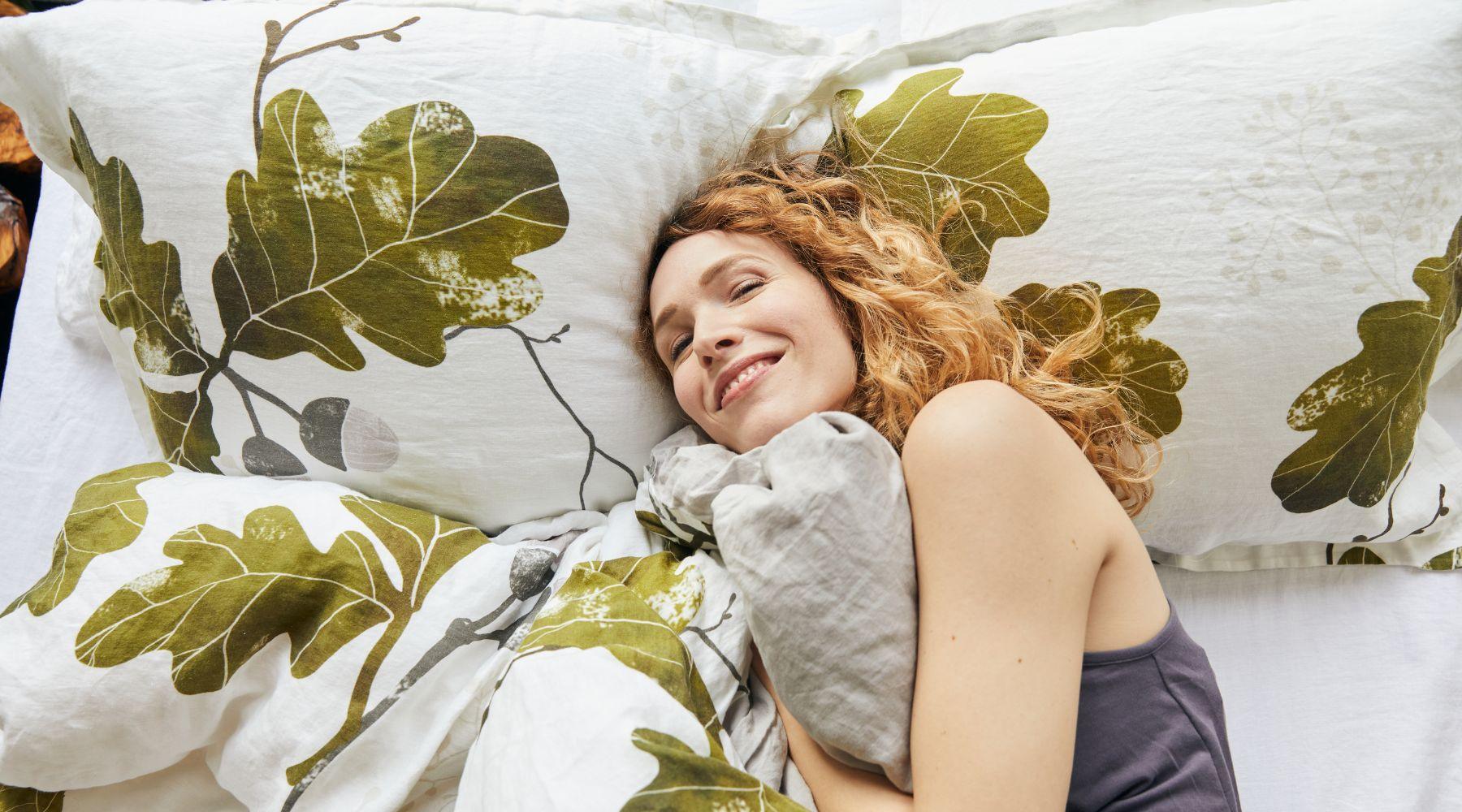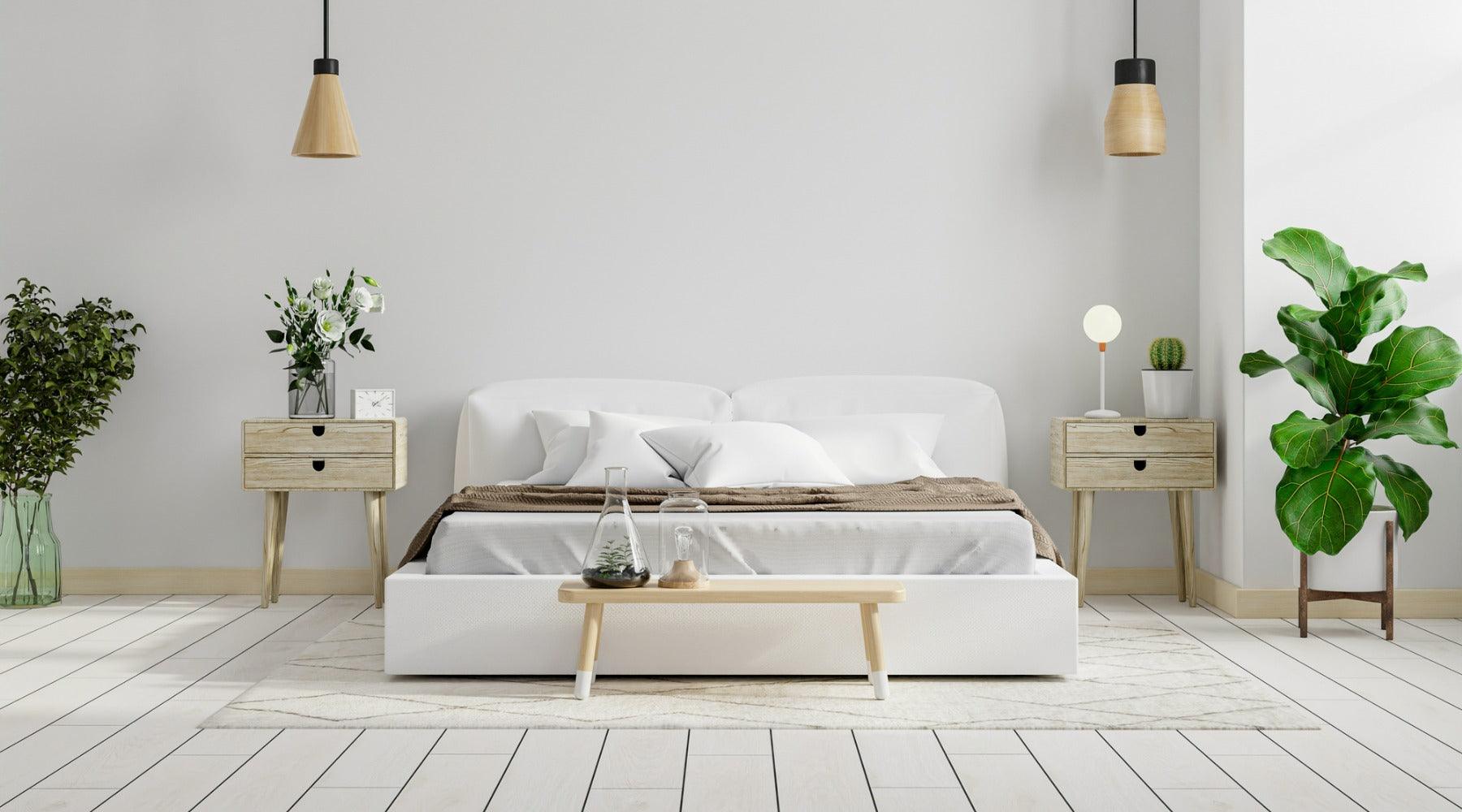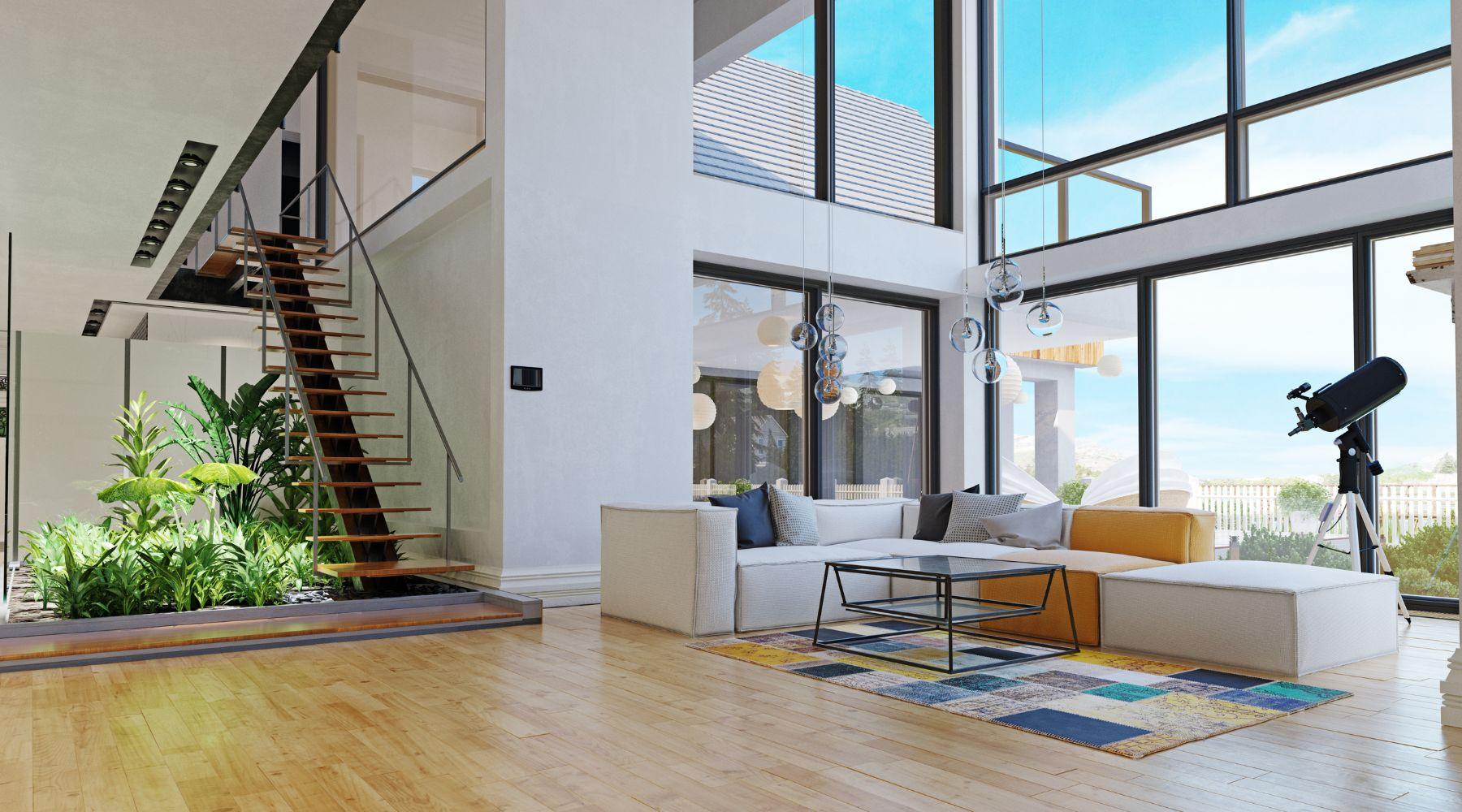
Is Linen Bedding Good for Your Skin?
If you have sensitive skin, organic linen is absolutely the textile for you. Find out what makes linen's properties so gentle on your skin.
Different Types of Linen
A popular myth about organic linen bedding is that it’s scratchy—as you may have experienced when handling linen sacking or car upholstery—but that’s not the same type of linen used in our organic linen duvet covers.
Linen comes from the flax plant, which yields both long and short fibers. These fibers are separated through a mechanical process called scutching: short, coarse fibers are used for industrial purposes, and long, fine fibers are used in homeware. Homeware-grade linen has all the same properties of strength and durability as industrial-grade linen but is soft and gentle on your skin.

Softer Over Time
That being said, linen bedding can still be a little stiff straight out of the factory—this is due to pectin, a fiber compound that’s naturally present in flax (and has been linked to better heart and gut health when consumed as flaxseed). Pectin is soluble—so we garment-wash your organic linen duvet covers using enzymes to ensure that it’s beautifully soft when it reaches you.
Even after being garment-washed, some pectin remains in the linen, which continues to dissolve over time as you use and wash your organic linen bedding. You’ll likely find, therefore, that your linen bedding is even softer after a year of use than when you bought it.
Free From Harmful Chemicals
The Modern Dane’s Nordic-style duvet covers are made from certified European Flax grown in France, Belgium, and the Netherlands. All farmers in this region sign the European Flax Charter—which means that the flax is produced with zero artificial irrigation, zero GMOs, and zero waste. European Flax scutching is 100% mechanical, with no chemicals used in the process.
Our European duvet covers also carry OEKO-TEX® Standard 100 Class 1 certification. The Standard 100 is an independent testing system for fabric safety, with requirements that go far beyond any international legislation. Our organic linen duvet covers carry Class 1 certification—the only class deemed safe for babies.
OEKO-TEX-certified products are free not only from legally regulated chemicals such as Azo dyes, formaldehyde, and phthalates, but also substances for which no legal regulation exists, such as pesticides or allergenic disperse dyestuffs. All Standard 100 textiles have a skin-friendly pH and use non-transferring dyes, which means that the color won’t rub off on your skin.
It’s worth knowing that OEKO-TEX certification applies not only to the linen itself, but to everything involved in the production of our Nordic-style duvet covers: the buttons, fasteners, and threads. You can sleep soundly knowing that your bedding is free from skin-irritating chemicals.
Hypoallergenic Linen
You may have heard that linen is hypoallergenic—but what does that actually mean?
Most allergic reactions to bedding are caused by dust mites or mold growing in the fabric. Hypoallergenic textiles possess properties that prevent the proliferation of these allergens, thereby reducing your chance of experiencing a reaction.
Linen is a naturally breathable fiber due to its porousness. This means that air can circulate freely, wicking moisture away and preventing mold from growing. And—although linen has a looser weave than silk or cotton—it’s sufficiently tight that dust mites cannot penetrate. These properties make linen bedding an ideal choice if you suffer from asthma or eczema.
All fabrics, however, need regular washing to remain allergen free, so wash your organic linen bedding at least once every two weeks to keep it fresh. The need for regular washing is one of the reasons Europeans prefer duvets and duvet covers to comforters: even with a top sheet, comforters regularly come into contact with the skin, and are a breeding ground for mold and dust mites unless washed. If you can’t bear to part with your comforter, consider putting a duvet cover over it instead.
A Better Complexion?
Linen’s moisture-wicking properties also wick sweat away from the skin. Sweat is a major cause of blocked pores, which go on to form blackheads and spots. Linen pillowcases, therefore, can support your skincare routine by keeping your skin dry at night. Make sure you select a breathable pillow to compliment your moisture-wicking bedding: responsibly sourced down pillows with a minimum fill power of 650 will have enough loft for air to circulate.
Did any of our facts about linen surprise you? Have you tried organic linen bedding? Let us know on Instagram, Pinterest, Facebook, or Twitter!







Leave a comment
This site is protected by hCaptcha and the hCaptcha Privacy Policy and Terms of Service apply.